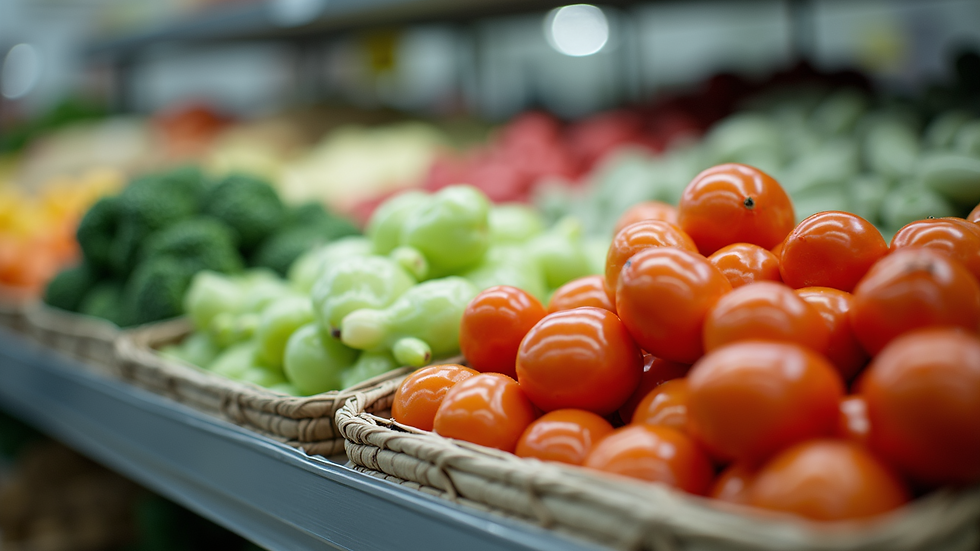Exploring Global Trading Products
- Tamer Elgammal
- Oct 20
- 4 min read
In today’s interconnected world, the flow of goods across borders shapes economies and industries. Understanding international trade goods is essential for businesses aiming to thrive in the global marketplace. As a professional in the food manufacturing and distribution sector, I have witnessed firsthand how diverse products move from one country to another, creating opportunities and challenges alike. This post will guide you through the essentials of international trade goods, highlighting key products, trade examples, and practical insights to help you navigate this dynamic landscape.
Understanding International Trade Goods: What You Need to Know
International trade goods refer to products that are bought and sold between countries. These goods can range from raw materials to finished products, and they play a crucial role in global commerce. For food manufacturers, distributors, and retailers, knowing the types of goods commonly traded internationally helps in sourcing quality ingredients and expanding market reach.
There are two main categories of international trade goods:
Primary goods: These include raw materials like agricultural products, minerals, and energy resources.
Manufactured goods: These are processed or finished products such as packaged foods, machinery, and electronics.
For example, frozen fruits and vegetables are primary goods that undergo processing before reaching consumers worldwide. Companies like TMG Trading EOOD focus on supplying high-quality frozen produce, ensuring freshness and sustainability throughout the supply chain.
Understanding the regulations, tariffs, and logistics involved in moving these goods is equally important. Each country has specific import and export rules that affect how products are traded. Staying informed about these factors can save time and reduce costs.

Key International Trade Goods in the Food Industry
The food industry is one of the most active sectors in international trade. Certain products dominate the market due to their demand, shelf life, and ease of transport. Here are some of the most significant international trade goods in this sector:
Frozen Fruits and Vegetables
These products are popular because they retain nutritional value and can be stored for long periods. Frozen berries, peas, and mixed vegetables are commonly traded items.
Specialty Food Ingredients
Ingredients like spices, herbs, and natural extracts are essential for food manufacturers looking to create unique flavours. These goods often come from specific regions known for their quality.
Grains and Cereals
Wheat, rice, and corn are staple commodities that support food production worldwide. Their trade is vital for food security in many countries.
Dairy Products
Cheese, butter, and powdered milk are frequently exported and imported, especially between countries with complementary production capacities.
Seafood
Frozen and fresh seafood products are traded globally, with a focus on sustainability and traceability.
For businesses aiming to expand internationally, focusing on these key goods can open doors to new markets. It is also important to consider consumer preferences and regulatory standards in target countries.

What are 5 examples of global trade?
To better understand the scope of international trade, here are five concrete examples that illustrate how goods move across borders:
Bananas from Latin America to Europe
Latin American countries like Ecuador and Costa Rica export large quantities of bananas to European markets. This trade supports local farmers and meets European demand for fresh fruit year-round.
Spices from India to North America
India is a major exporter of spices such as turmeric, cardamom, and black pepper. These spices are essential for North American food manufacturers and retailers seeking authentic flavours.
Frozen berries from Eastern Europe to Western Europe
Countries like Poland and Bulgaria supply frozen berries to Western European countries. These berries are used in desserts, smoothies, and health foods.
Seafood from Norway to Asia
Norway exports salmon and other seafood products to Asian markets, where demand for high-quality fish is growing rapidly.
Coffee from Brazil to global markets
Brazil is the world’s largest coffee producer, exporting beans to countries worldwide. This trade supports a vast network of growers and processors.
These examples highlight the diversity and complexity of global trade. Each product has its own supply chain, regulations, and market dynamics that businesses must navigate.

How to Successfully Source and Trade International Food Products
Sourcing and trading international food products requires careful planning and execution. Here are some actionable recommendations to help you succeed:
Research Market Demand
Understand what products are in demand in your target markets. Use market reports, trade data, and customer feedback to guide your sourcing decisions.
Build Strong Supplier Relationships
Partner with reliable suppliers who prioritize quality and sustainability. Regular communication and site visits can help maintain standards.
Ensure Compliance with Regulations
Familiarise yourself with import/export laws, food safety standards, and certification requirements. Non-compliance can lead to delays and penalties.
Invest in Logistics and Cold Chain Management
For perishable goods like frozen fruits and vegetables, maintaining the cold chain is critical. Work with experienced logistics providers to ensure product integrity.
Leverage Technology
Use digital tools for inventory management, tracking shipments, and forecasting demand. Technology can improve efficiency and reduce risks.
By following these steps, businesses can enhance their competitiveness and build a reputation for quality in the international market.
The Future of International Trade Goods in the Food Sector
Looking ahead, the landscape of international trade goods in the food sector is evolving. Sustainability, traceability, and consumer preferences are driving changes in how products are sourced and traded.
Sustainable Sourcing
There is increasing pressure to source products responsibly, reducing environmental impact and supporting fair labour practices.
Innovation in Packaging
Eco-friendly and functional packaging solutions are becoming standard to extend shelf life and reduce waste.
Digital Trade Platforms
Online marketplaces and blockchain technology are improving transparency and efficiency in global trade.
Diversification of Product Offerings
Companies are expanding their portfolios to include specialty and health-focused ingredients to meet changing consumer demands.
For businesses like TMG Trading EOOD, embracing these trends is essential to becoming a leading global supplier of high-quality frozen fruits, vegetables, and specialty food ingredients. Staying ahead means continuously adapting to market needs while maintaining a commitment to quality and sustainability.
Exploring the world of global trading products reveals a complex but rewarding landscape. By understanding the key international trade goods, learning from real-world examples, and applying best practices, businesses can unlock new opportunities and contribute to a thriving global food industry.



Comments